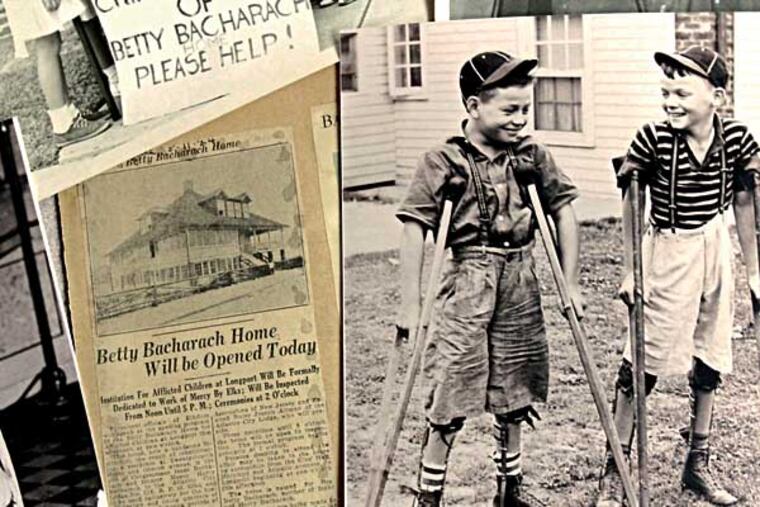Shore specialty hospital, Bacharach, marks 90th year
The world was a different place when the Betty Bacharach Home for Afflicted Children opened on Mother's Day 1924. Polio, rheumatic fever, tuberculosis, and other disabling diseases were widespread in America, and few facilities offered long-term care for pediatric patients.

The world was a different place when the Betty Bacharach Home for Afflicted Children opened on Mother's Day 1924.
Polio, rheumatic fever, tuberculosis, and other disabling diseases were widespread in America, and few facilities offered long-term care for pediatric patients.
Five siblings in the wealthy, powerful, and politically wired Bacharach family of Atlantic City - then a prosperous, even glamorous destination - wanted to help.
So they opened a tiny charity hospital in Longport for severely disabled youngsters, regardless of "race, creed or color;" named the place for their mother; and nurtured it into a cause célèbre among celebrities of all stripes.
"Everybody played Atlantic City, and everybody played Bacharach," says longtime board member Elliott Krause, noting that Steel Pier impresario George Hamid required performers to visit the Betty Bacharach Home.
Krause, a retired urologist, is the unofficial historian of what is now the Bacharach Institute for Rehabilitation. The facility moved from Longport to woodsy Galloway Township, Atlantic County, in 1975.
He notes that Bacharach dropped its free-to-all treatment policy in the early '70s. And as polio and other childhood scourges were defeated, its focus gradually broadened and now includes adults undergoing joint replacements, those injured in accidents, and stroke patients.
"We're a little jewel in the Pinelands," Mary Joyce Perskie, vice president for marketing, says.
The 80-bed hospital treats 2,000 inpatients a year and also provides outpatient services at 15 satellite locations.
Its proud past is very much present. A mural in the main lobby depicts a star-studded humanitarian history, and a formidable portrait of Betty Bacharach gazes down from one wall of the boardroom, where a glossy array of photos is arranged on the table.
Here's Joe DiMaggio, signing an autograph for a bedridden boy; there's Ronald Reagan with a host of other Hollywood stars in the 1940s, crowding around a tiny girl who looks up at them in wonder.
Abbott and Costello, Al Jolson, Max Baer, Amelia Earhart, Connie Mack, Dorothy Lamour, assorted Miss Americas . . . the photos depict a hit parade of long-ago luminaries, smiling for the cameras to benefit the Betty Bacharach Home.
And then there are the patients, with their crutches, braces, splints, and wheelchairs, beaming bravely despite twisted spines and spindly limbs.
The images are a reminder of how few treatments, and less hope, existed for many such youngsters in the 1930s and '40s, when "mainstreaming" a severely disabled child would have seemed like science fiction.
"There was no physical therapy as we know it today," Krause says, adding that Bacharach was nevertheless innovative.
It built a saltwater hydrotherapy pool in 1937, and employed Elizabeth Kenny's pioneering polio-treatment methods.
Also known as Sister Kenny, the world-famous Australian nurse recommended moist heat and mild exercise, rather than the standard immobilization "frames."
No such medieval devices are used in the institute's gymnasium-size treatment room where I met Jannette Lumley, 42, of Galloway.
The mother of two has spinal injuries and said Bacharach "really keeps me motivated to walk again. I want to go home and play with my kids."
Like Lumley, most of the patients hail from Atlantic County. "We've always been a local, community-based organization," Bacharach CEO Richard J. Kathrins said. "We are here today because of that community support."
Betty's great-granddaughter, Betty Bacharach Howley, 81, attended the 90th anniversary celebration on May 9.
"I spent every Saturday at the home . . . reading and talking to the children in the iron lungs," she wrote via e-mail.
"Every Mother's Day was spent at the home, where the festivities always included movie stars."
But at the anniversary bash, I'm told, Betty Bacharach Howley was the star.